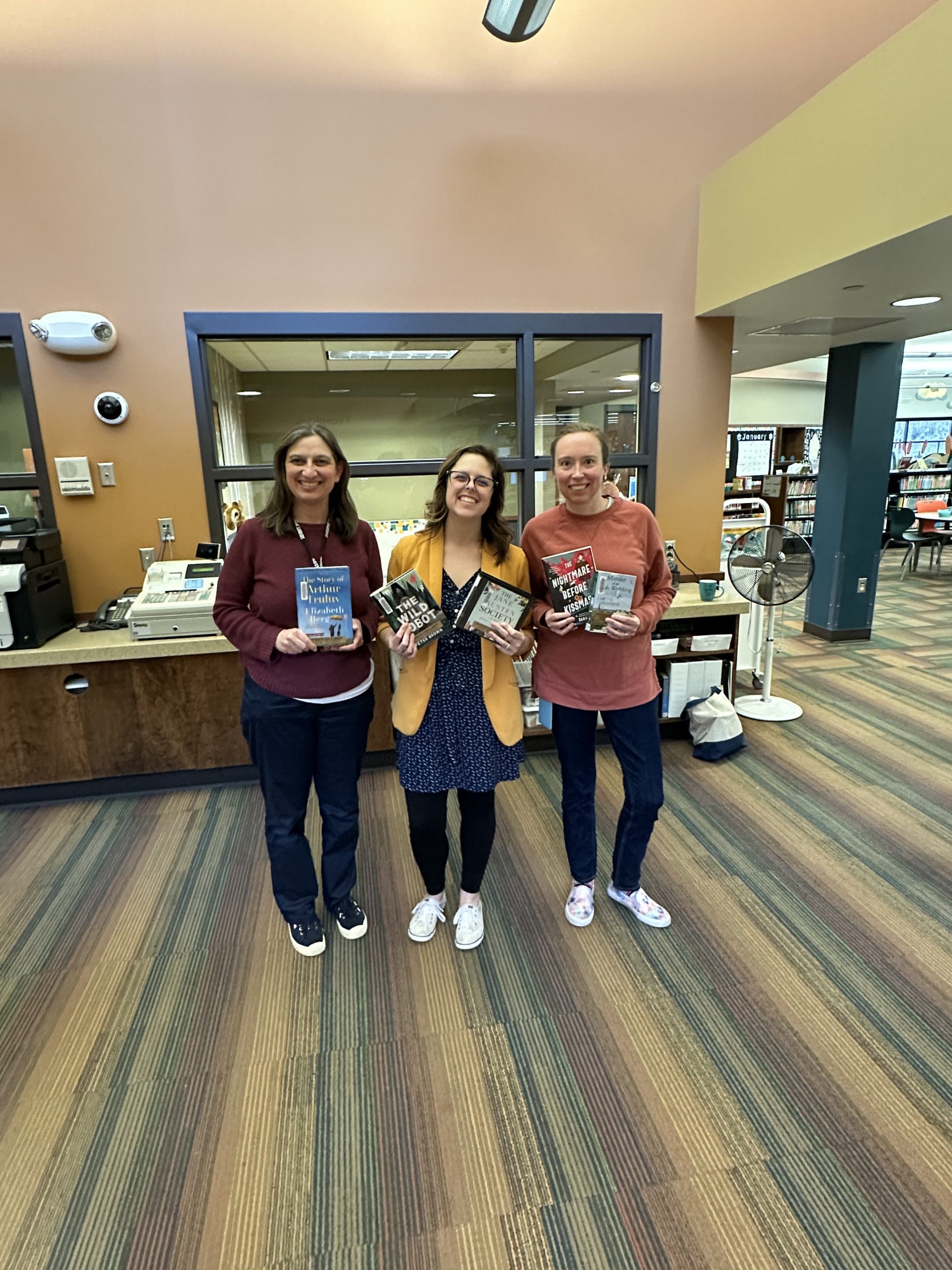Photography has never been more accessible with the rise of technology allowing us the ability to have a high-quality camera in our pocket at all times. Whether you just want to take better pictures while on a hike, during your summer travels, or even want to take a step towards photography becoming a career, here are some materials we have here at Davenport Public Library! Access through coming into the library, our online catalog, or the streaming service, Kanopy, with your Davenport Library card! All descriptions are provided by the publisher.
Book:
From choosing the right equipment and aperture exposure to adjusting focus and flash, The Beginner’s Photography Guide explains key concepts in clear and simple terms to help you maximize the features of your camera.
Getting Your Shot: stunning photos, how-to tips, and endless inspiration from the pros
In this inspirational how-to photography book, the photo experts at National Geographic share their invaluable tips, advice and insights alongside more than 200 breathtaking photos–from glorious landscapes to intimate moments, from black-and-white to exuberant color, from the exotic to the homespun. These stunning and evocative photos, drawn from National Geographic’s thriving online photography community “Your Shot,” provide inspiration for photographers of all skill levels. This book reveals inside stories on how the featured photographers were able to get these incredible shots, and is filled with encouragement and inspiration for the artist and dreamer inside all of us.
Lonely Planet’s Guide to travel photography
Return from your travels with the pictures you’ve always wanted in this fourth edition of Lonely Planet’s best-selling Travel Photography, internationally renowned travel photographer Richard I. Anson shows you how to avoid common photography mistakes and to develop your compositional and technical skills as a photographer.
The camera bag companion: your personal photography tutor
Imagine having your personal, professional photographer with you whenever you go out to shoot. There to guide you, share their knowledge, and inspire you to take better photographs. In his latest book, Benedict Brain puts himself in your kitbag, with a beautifully illustrated how-to guide that’s as essential as any lens or tripod, and cuts through the jargon to deliver clear advice in a friendly, conversational style.
DVD:
Binge box. Outdoor photography — beginner’s guide
Beginners guide to outdoor photography/Beginner’s guide to manual mode: The learning curve for photography can be very steep for many, and it’s often filled with frustration. Multiple camera settings can clutter the mind of someone simply trying to create a beautiful image. In this video instructional class, your Instructor David Johnston will teach you about camera settings that will simplify the photography process.
Streaming (Kanopy):
With Fundamentals of Photography, you’ll learn everything you need to know about the art and craft of great photography straight from Joel Sartore, a National Geographer photographer with more than 30 years of experience. Designed for people at all levels, these 24 episodes are an engaging guide to how photographs work and how to make them work better for you.
Beginner’s Guide to Outdoor Photography
Master the basics of outdoor photography to create beautiful images. In this class you’ll learn all about camera settings for shutter speed, exposure, f-stops, range of focus and more. Once you understand camera settings and how to use them, you’ll be able make the camera work for you to find the best balance of light and compose your best photos yet.
Landscape & Wildlife Photography
National Geographic photographers Michael Melford and Tim Laman reveal stories and secrets about great landscape and wildlife photography. Taking you around the world, their 24 visually rich lectures present the art of seeing that’s key to taking unforgettable photos of desert cliffs, penguin colonies, dramatic waterfalls, and more.
What is your favorite thing to take pictures of? Let us know in the comments!







 Globally, the Korean language is spoken by over 80 million people, primarily in South Korea (51.7 million) and North Korea (26.4 million). Beyond the Korean Peninsula, significant Korean-speaking communities exist due to historical migration, notably China with approximately 2 million speakers. Japan hosts about 500,000 Korean speakers, mainly descendants of Koreans who migrated during the early 20th century. Further abroad, the United States is home to around 1.8 million Korean speakers, with large communities in cities like Los Angeles, New York, and Washington D.C. Other countries with notable Korean-speaking populations include Russia, with approximately 250,000 speakers, and Canada, where around 218,000 individuals speak Korean (worlddata.info). Australia has a Korean-speaking population of about 102,000, primarily residing in New South Wales. Smaller communities are also found in countries such as Uzbekistan, Kazakhstan, and various European nations. These global communities maintain the Korean language through cultural institutions, schools, and media, preserving their linguistic heritage and contributing to the worldwide spread of Korean culture (britannica.com and pathtokorean.com).
Globally, the Korean language is spoken by over 80 million people, primarily in South Korea (51.7 million) and North Korea (26.4 million). Beyond the Korean Peninsula, significant Korean-speaking communities exist due to historical migration, notably China with approximately 2 million speakers. Japan hosts about 500,000 Korean speakers, mainly descendants of Koreans who migrated during the early 20th century. Further abroad, the United States is home to around 1.8 million Korean speakers, with large communities in cities like Los Angeles, New York, and Washington D.C. Other countries with notable Korean-speaking populations include Russia, with approximately 250,000 speakers, and Canada, where around 218,000 individuals speak Korean (worlddata.info). Australia has a Korean-speaking population of about 102,000, primarily residing in New South Wales. Smaller communities are also found in countries such as Uzbekistan, Kazakhstan, and various European nations. These global communities maintain the Korean language through cultural institutions, schools, and media, preserving their linguistic heritage and contributing to the worldwide spread of Korean culture (britannica.com and pathtokorean.com). But, according to a 2021 report from the language learning app, Duolingo, Korean is in the top 6 most popular languages to learn around the world (English, Spanish, French, German, Japanese, Italian, and Korean). The surge in interest in learning Korean is largely attributed to the global phenomenon known as the Korean Wave, or “Hallyu,” which encompasses the international popularity of Korean music, films, and television dramas. This cultural movement has significantly increased the number of non-native speakers learning Korean, as individuals seek to engage more deeply with Korean media and culture (linguakorean.com and asiasociety.org). Learning Korean opens doors to various career opportunities, especially in fields like international business, technology translation, and diplomacy. South Korea is home to global giants like Samsung, Hyundai, and LG, making knowledge of the Korean language an asset for professionals looking to engage in the East Asian market (koreatimes.com). Moreover, the U.S. government considers Korean a critical language, offering scholarships and career opportunities in agencies such as the CIA, Department of State, and NSA for individuals with Korean language skills.
But, according to a 2021 report from the language learning app, Duolingo, Korean is in the top 6 most popular languages to learn around the world (English, Spanish, French, German, Japanese, Italian, and Korean). The surge in interest in learning Korean is largely attributed to the global phenomenon known as the Korean Wave, or “Hallyu,” which encompasses the international popularity of Korean music, films, and television dramas. This cultural movement has significantly increased the number of non-native speakers learning Korean, as individuals seek to engage more deeply with Korean media and culture (linguakorean.com and asiasociety.org). Learning Korean opens doors to various career opportunities, especially in fields like international business, technology translation, and diplomacy. South Korea is home to global giants like Samsung, Hyundai, and LG, making knowledge of the Korean language an asset for professionals looking to engage in the East Asian market (koreatimes.com). Moreover, the U.S. government considers Korean a critical language, offering scholarships and career opportunities in agencies such as the CIA, Department of State, and NSA for individuals with Korean language skills.


















 The Italian language has a long and rich history in the United States. For centuries, especially during the late 19th and early 20th centuries, large numbers of Italians immigrated to the U.S. in search of a better life. They tended to settle in large cities where they established thriving Italian communities. Today, many of their descendants continue to speak Italian and maintain their cultural heritage. Roughly 764,000 people in the U.S. speak Italian at home according to the U.S. Census Bureau. New York and New Jersey have the highest number of native Italian speakers (294,000 and 116,000, respectively), but communities of Italian speakers can also be found across the country, especially in large cities like Chicago, Miami, Philadelphia, Boston, St. Louis, and Buffalo, among others. Italian is still an essential regional language in many American communities. Depending on the source, Italian is listed as high as the 4th (and as low as the 12th) most-studied foreign language in the United States. Since much language learning now occurs online or casually through an app, and not in a formal classroom setting, these numbers are difficult to confirm.
The Italian language has a long and rich history in the United States. For centuries, especially during the late 19th and early 20th centuries, large numbers of Italians immigrated to the U.S. in search of a better life. They tended to settle in large cities where they established thriving Italian communities. Today, many of their descendants continue to speak Italian and maintain their cultural heritage. Roughly 764,000 people in the U.S. speak Italian at home according to the U.S. Census Bureau. New York and New Jersey have the highest number of native Italian speakers (294,000 and 116,000, respectively), but communities of Italian speakers can also be found across the country, especially in large cities like Chicago, Miami, Philadelphia, Boston, St. Louis, and Buffalo, among others. Italian is still an essential regional language in many American communities. Depending on the source, Italian is listed as high as the 4th (and as low as the 12th) most-studied foreign language in the United States. Since much language learning now occurs online or casually through an app, and not in a formal classroom setting, these numbers are difficult to confirm. 












































































 Last month we covered the Spanish language and the resources offered by The Library. This month, we’ll take a look at French. While not a commonly spoken language here in the Quad Cities, or even in Iowa, French is the 5th most spoken language in the world. With 321 million speakers (111 million who speak it as their mother tongue), French speakers make up 3.6% of the world population. French is also the 4th most used language on the internet (Ministry for Europe and Foreign Affairs) and is one of the only languages with speakers on every continent. With 74 French-speaking countries, French is considered a world language. Only 39 countries and independent states use French as their official or common language (Worlddata.info) and the language is at least partly spoken as a mother tongue in as many as 12 other countries.
Last month we covered the Spanish language and the resources offered by The Library. This month, we’ll take a look at French. While not a commonly spoken language here in the Quad Cities, or even in Iowa, French is the 5th most spoken language in the world. With 321 million speakers (111 million who speak it as their mother tongue), French speakers make up 3.6% of the world population. French is also the 4th most used language on the internet (Ministry for Europe and Foreign Affairs) and is one of the only languages with speakers on every continent. With 74 French-speaking countries, French is considered a world language. Only 39 countries and independent states use French as their official or common language (Worlddata.info) and the language is at least partly spoken as a mother tongue in as many as 12 other countries.



















 The Librarians Celebrate Spunky Old Broads Day
The Librarians Celebrate Spunky Old Broads Day DavenportU Citizens Academy with Allie McWilliams
DavenportU Citizens Academy with Allie McWilliams Show Your Love for Our Library
Show Your Love for Our Library  Black History Month Reading Suggestions
Black History Month Reading Suggestions What Our Hosts Read In January
What Our Hosts Read In January